In the field of education, which never stops changing, we’re shifting how we teach and learn at a pace that can be likened to moving from slate to digital tablets. This progressive revolution sees us move from the inflexible traditional pedagogy — one set in stone and works for all — to a more fluid and responsive innovative teaching approach. This blog will teach about Teaching Methods in the Modern Classroom.
Today’s classrooms are not uniform melting pots but vibrant mosaics of different cultures, backgrounds, and learning styles: an educational approach must be as dynamic as the students it serves. The transition towards innovative teaching methods isn’t just a trend within education; it’s an essential adjustment needed by any complex modern-day educational setting with rapidly changing evolving demands.
Characteristics Of Modern Teaching Methods
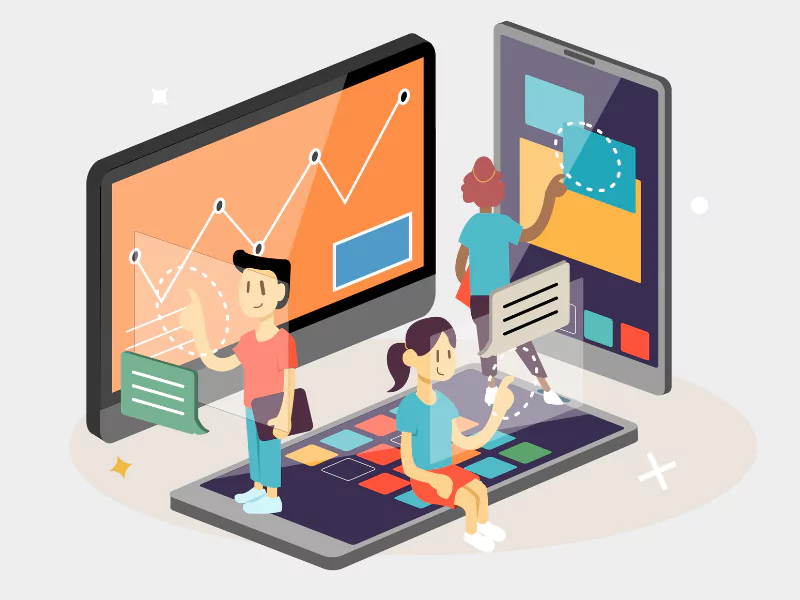
When educators embrace these changes, they do more than improve the quality of learning experiences: they also equip students with skills necessary for surviving in a world where change is constant—not by choice but because it has become part of their lives.
The essence of innovative teaching is that students play a central role in their learning experience. This is a major shift from traditional teacher-led instruction to methods that accommodate and adjust to individual learning styles and needs that every student requires; thus, it respects and values—not only but also celebrates—diversity within the classroom. An inclusive educational environment is promoted where all students feel valued and understood: all this takes place at a point where innovative teaching originates.
Students’ unique pathways to learning are different, depending on whether they will be able to respond positively or negatively and how these paths are structured. Some learners may prefer visual aids plus technology. In contrast, others would instead go for project-based activities or group work. When these preferences are considered when implementing innovative teaching methods, no student is left out because some students learn more naturally in specific ways (such as visuals or hands-on activities) than others do through typical instructional strategies.
In addition, promoting innovative teaching is about establishing a curiosity-based approach. Instead of telling everything directly, educators provoke pupils to ask questions, seek answers, and find relationships independently. This turns education from passive learning into an active quest where every piece of new information is a valuable discovery. If children show real interest in what they are studying, they will be curious enough to get this knowledge and make it interesting for themselves later. Such an atmosphere promotes fun learning, stimulates memory retention, and develops self-directed learners.
The infusion of technology within present-day educational systems makes classrooms metamorphose into interactive places where learning is enjoyable. Digital tools like virtual reality software or even smartphone applications become integral parts that significantly impact how students deliver and receive lessons. Such materials ensure that the presented content can easily capture attention at any level without encountering any challenges.
Check out this video to know more:
12 Modern Classroom Teaching Methods For Every Educator Out There
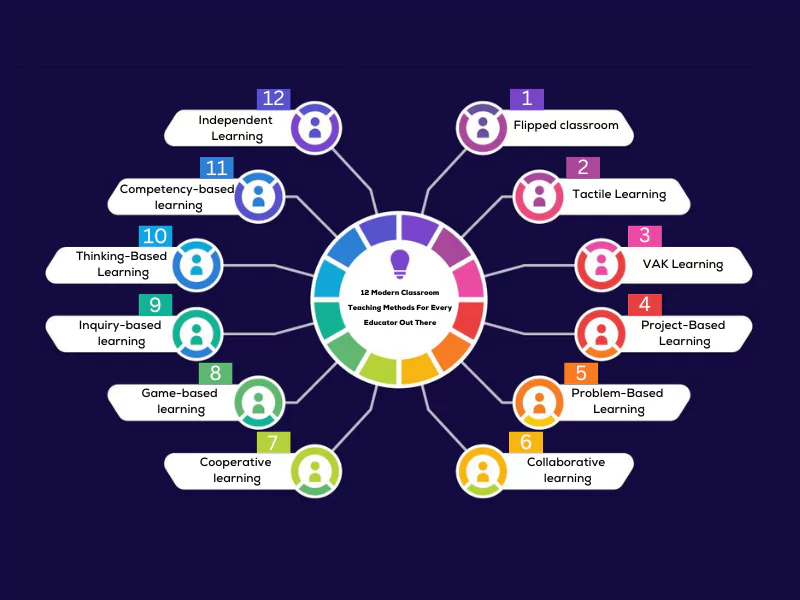
The modern classroom teaching methods are:
Flipped classroom: This modern classroom teaching method in which students complete classwork outside class and then collaborate on projects and conversations.
Tactile Learning: Interactive exercises, hands-on activities, and demonstrations are part of tactile learning.
VAK Learning: Uses materials to accommodate kinesthetic, aural, and visual learners.
Project-Based Learning: Emphasizes practical skill development through real-world projects.
Problem-Based Learning: To improve problem-solving abilities, a problem is first presented.
Collaborative learning: This helps in social and cooperative skills-building group activities.
Cooperative learning: In this method, students work in small groups and are assigned particular roles.
Game-based learning: Utilizing games makes learning exciting and enjoyable.
Inquiry-based learning: Students are encouraged to research and respond to open-ended questions.
Thinking-Based Learning: Encourages in-depth inquiry and contemplation to foster critical thinking.
Competency-based learning: The goal is to attain particular competencies through individualized learning pathways.
Independent Learning: Allows pupils to choose how they want to learn and how they want to learn it.
Importance of Modern Teaching Methods
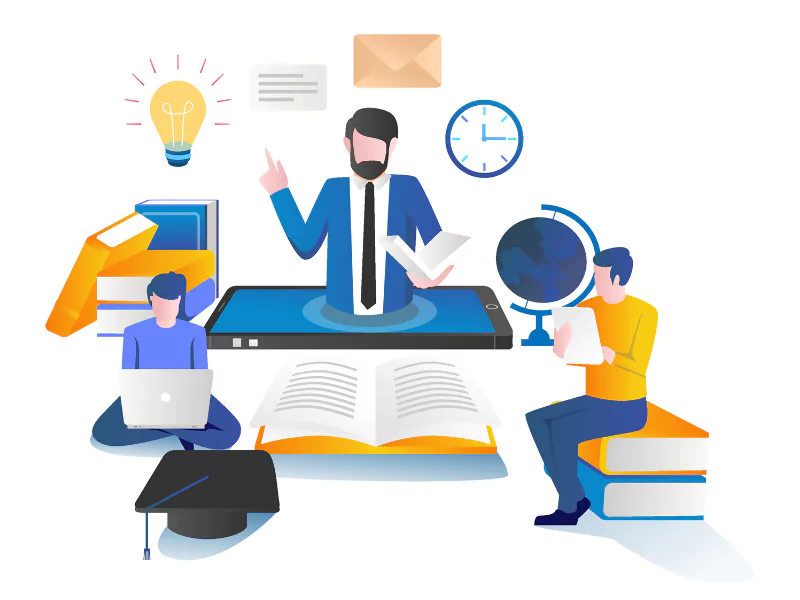
The importance of modern teaching methods is as follows:
Ready for a Changing World
Contemporary strategies give students the tools to adjust to the ever-changing world.
Development of Essential Skills
These strategies develop critical thinking, problem-solving, and digital literacy—skills essential to the workforce and today’s society.
Student-Centered Approach
These methods boost motivation and engagement by prioritizing students’ Global Citizenship Preparation
needs and interests and promote a more dynamic and holistic learning environment.
Higher Retention Rates
Incorporating dynamic and captivating teaching strategies promotes higher recall rates and a more profound comprehension of intricate ideas.
Global Information Access
Contemporary teaching strategies use technology to enable students to access and evaluate data from various sources, encouraging a more inclusive viewpoint.
Students gain a greater understanding of how to be responsible and educated global citizens by engaging with information and viewpoints from around the world.
Modern Classroom Vs Traditional Classroom
| Aspect | Modern Classroom | Traditional Classroom |
|---|---|---|
| Focus | Student-centered | Teacher-centered |
| Teaching Style | Interactive and personalized | Rote learning and standard lectures |
| Technology Use | High use of technology for learning | Minimal or no use of technology |
| Student Role | Active participants | Passive receivers of information |
| Teacher's Role | Facilitator and guide | Sole authority and knowledge source |
| Learning Approach | Encourages exploration, questioning, creation | Focuses on memorization and obedience |
| Skill Development | Creativity, adaptability, problem-solving | Focus on factual knowledge retention |
| Engagement | High due to interactive methods | Often low due to lecture dominance |
Conclusion
The demand for educators to take on these fresh methods cannot be overemphasized. The future is uncertain as the globe becomes more complicated and linked together. Common approaches alone are insufficient to prepare students for that unknown time ahead. Students need teaching techniques that challenge their minds and foster creativity and problem-solving skills applicable to real-life situations. Only such abilities can enable learners to become resilient enough to survive many situations while succeeding.
Therefore, educational institutions must adopt this type of innovative teaching strategy as a matter of urgency. Schools should provide teachers with the necessary tools, such as training programs and materials, required during the implementation process so that it becomes effective within their classrooms. This will help improve students’ learning and overall education standards, making it relevant even in a fast-changing world.
To sum up my argument, it’s about time we all act upon what needs doing most urgently – adopting new ways of teaching! Parents who want better lives for their children, administrators looking forward towards excellence at workplaces, policymakers seeking transformational leadership, or simply any individual interested in personal growth through knowledge acquisition.

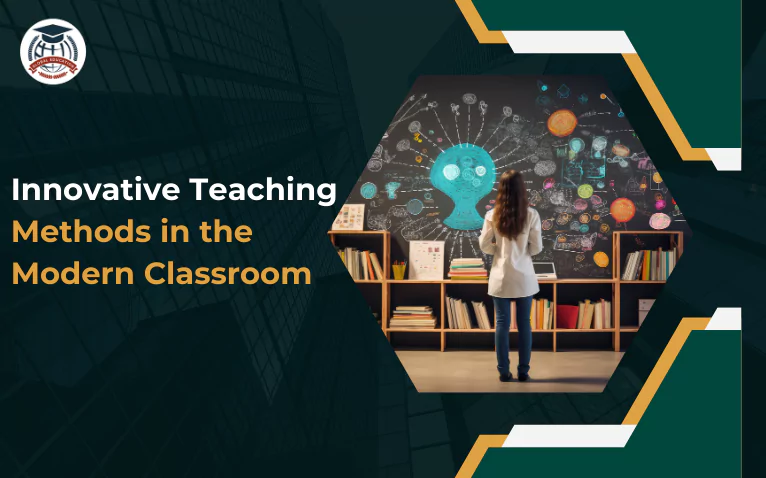


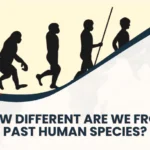


0 Comments